Resilient Clarence
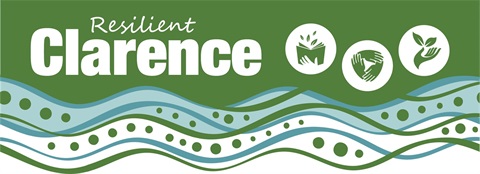
Personal stories from the 2019-2020 bushfires were collated into a digital map of the region as the final component of the Resilient Clarence project.
The digital map allowed us to hear personal stories of loss and survival, strength and resilience from residents across our small towns and villages. From Glenreagh, Ewingar, Nymboida, Dundurrabin, Baryulgil and Malabugilmah to Woombah, Iluka, Ashby and Wooloweyah. Stories were gathered during an art road show that travelled across the bushfire-affected communities and is a collaborative map that connected communities and gave people an opportunity to share their fire stories.
The digital map also includes a range of videos documenting the impacts on our environment, threatened species and damage done by invasive species as the landscape continues to regenerate.
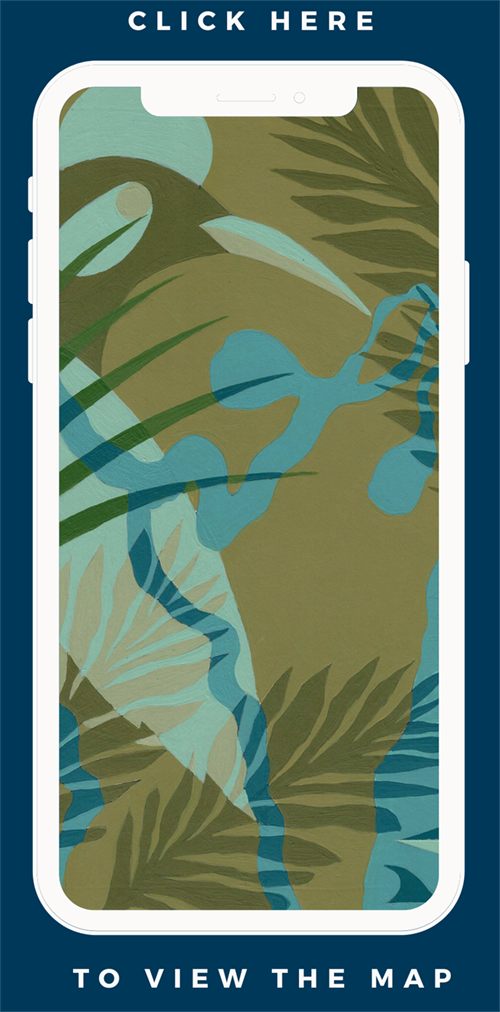
About Resilient Clarence
Between July 2019 and January 2020, 548,698 hectares, 59% of the Clarence Valley was burnt by catastrophic and unprecedented bushfires. The fires directly impacted 1500 rural residents. A total of 168 houses, 418 outbuildings and over 10,000km of fencing were lost. Nymboida was hardest hit, losing 90 homes; Ewingar, Dundurrabin and Glenreagh were also significantly impacted.
Through community feedback following the fires, Council identified a priority for better understanding the stages of recovery for wellbeing, reconnecting with nature and future fire preparedness. From this, the Resilient Clarence Project was developed to work with the most severely impacted communities of Ashby, Baryulgil, Dundurrabin, Ewingar, Glenreagh, Iluka, Malabugilmah, Nymboida, Wooloweyah and Woombah.
An overarching and enduring lesson remains; it is people that MAKE community. It is made of ordinary folk that add the EXTRA to make community extraordinary. It is backboned by those who show up first and leave last. Who tirelessly take the calls, and rally the help, and keep pushing and contributing and setting the bar no matter the challenges thrown. Who fall into bed exhausted but lie awake thinking of ideas and ways how to make life kinder, fuller, better for those around them. Then wake up the next day and get stuck into it. That is community-led resilience.
Cultural Heritage and Preparedness
 A partnership with Blanc Space was developed to collect fire stories from across the Clarence Valley. Creative Director, Hayley Talbot, was the project lead for the Cultural Knowledge and Storytelling project and she road tripped around our vast LGA to connect with communities, to hear and record their stories and to engage community members in the creation of a very striking artwork.
A partnership with Blanc Space was developed to collect fire stories from across the Clarence Valley. Creative Director, Hayley Talbot, was the project lead for the Cultural Knowledge and Storytelling project and she road tripped around our vast LGA to connect with communities, to hear and record their stories and to engage community members in the creation of a very striking artwork.
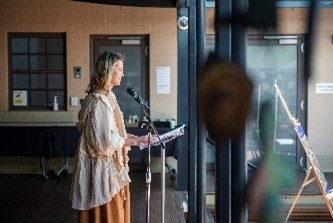 The stories shared courageously within this collection amount to a sliver of voices and stories gathered, whilst in no way speak for the entire community, offer a glimpse inside the truth of the events that transpired within them.
The stories shared courageously within this collection amount to a sliver of voices and stories gathered, whilst in no way speak for the entire community, offer a glimpse inside the truth of the events that transpired within them.
The project involved a creative recovery effort in 10 priority-affected communities. It emerged during that process that not every community had engaged in forms of creative recovery post-fire. With this in mind, Blanc Space came up with a way for all of the separate communities to connect and to tangibly commemorate their fire experience and the regrowth that has followed.
Blanc Space worked with nationally renowned Woombah artist Al Stark to capture themes in the artwork seen on the digital map, and to create a giant paint-by-numbers iteration that through the vision of artist and facilitator Kerrie Speirs, and the community hands, was transformed from a black canvas to a vibrant and life-celebrating REGROWTH artwork.
The REGROWTH artwork is a 4m x 2.6m canvas comprised of the oil pastel strokes of hundreds of hands from across the Clarence Valley communities. It is a symbol of home, connection and as the name offers; regrowth.
Reconnecting with nature
 Resilient Clarence worked with Envite, Clarence Landcare, St Vincent De Paul Society (Vinnies) and Northern Rivers Catchment Management (NRCM) to help bushfire affected communities reconnect with nature and heal the scars the fires etched into the landscape.
Resilient Clarence worked with Envite, Clarence Landcare, St Vincent De Paul Society (Vinnies) and Northern Rivers Catchment Management (NRCM) to help bushfire affected communities reconnect with nature and heal the scars the fires etched into the landscape.
Responding to high levels of concern about the impacts the fires had on the environment the projects run by these partners aimed to boost environmental recovery efforts while bringing communities together through engaging activities.
Envite worked in Malabugilmah to deliver an Aboriginal Leadership Bush Regeneration Program and with Yaegl youth to connect and Heal Country at a walk and talk on cool burning. A follow up Introduction to Mosaic Burning was also facilitated with interested landholders.
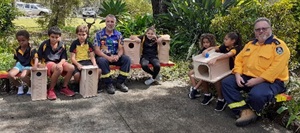 Landcare delivered a range of programs which included:
Landcare delivered a range of programs which included:
- 2 x eDNA workshops: Environmental eDNA programs to determine what animals were present in the environment post fire with eDNA samples collected from Nymboida and Dundurrabin.
- 4 x schools’ programs: Hollows are Homes - teaching children about the importance of hollows in the environment
- 4 x post-schools program community events: Is Wildlife Bouncing Back, Birds Boxes and beasts and Canines for Wildlife
- 2 x fire resilient gardening workshops
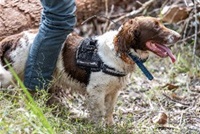
NRCM completed a report on the post fire erosion impacts upon threatened fish species. The scope of the project was to identify the erosion of burnt landscapes and significant volumes of ash and sediment laden runoff entering freshwater ecosystems which provide key habitat for populations of two threatened fish species: Eastern Freshwater Cod (EFC) and Oxleyan Pygmy Perch (OPP).
A suite of 16 videos were produced and included stories about Canines for Wildlife, Mosaic burning, Wildlife monitoring cameras, Tackling tropical soda apple, Tucabia flora reserve, Angourie Regeneration Post Bushfire, Tackling toads, Intro to Mosaic burning, Trees for koalas, Koalas in the Clarence, Native bees of the Clarence Valley, Yaegl Coastal emu festival, How the Clarence Valley is recovering from the fires, eDNA research, Indian Mynas, and The role of flying foxes in the environment.
You can view these videos and more on the digital map.
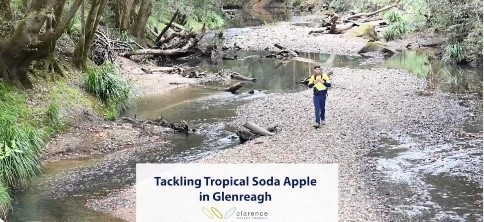
Community Led Resilience
 The Resilient Clarence project worked in partnership with external agencies to better enable the delivery of programs in target communities.
The Resilient Clarence project worked in partnership with external agencies to better enable the delivery of programs in target communities.
The Red Cross facilitated workshops and training on: Psychological First Aid, Communicating in Recovery, Emergency Preparedness and Information Sessions, Connecting to Regional Hub Information Sessions, Connecting to Emergency Management Training, Building Community-led Resilience Teams and Recovery Basic and Self Care.
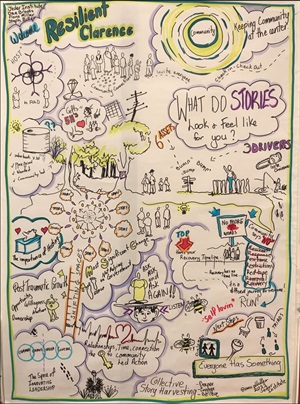 Vinnies facilitated a range of TAFE courses including Farm Fencing, Psychological First Aid, Chainsaw Cut and Trim courses for Women, Tree Felling, Chemical Handling and Safe Food Handling.
Vinnies facilitated a range of TAFE courses including Farm Fencing, Psychological First Aid, Chainsaw Cut and Trim courses for Women, Tree Felling, Chemical Handling and Safe Food Handling.
Additional workshops across a range of subjects included Asset Based Community Development, Community leaders’ workshop, Hosting and Harvesting workshop, Mindfulness and Finding your New Life with David Roland.
In the remote First Nations community of Malabugilmah we supported a Doobs Circle, a community-led initiative that is creating a safe space for women to gather, connect, yarn, practice culture, share food, develop skills, and support each other. The group promotes and strengthens connection, collaboration, culture, resilience, personal growth, and healing. It is a space where women can build a safer and more resilient community through improving local food security and preparedness.
Community events included:
- Five community lunches and picnics: bringing people together to connect over the simple pleasure of food, music and activities. These community-led events offered people the chance to chat, make new connections and reconnect with one another.
- Five community evenings hosted by Grace & Hugh with a performance and screening of ‘Up the Armidale Road’
- Festival of small halls at Wooloweyah and Dundurrabin
To ensure community members are better prepared for emergency 1000 Emergency Grab bags were distributed across the Clarence Valley to assist people in the event of a future disaster.
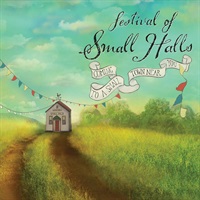
Community Event held 24 November 2022
Communities were celebrated on 24 November 2022 at the Grafton Regional Gallery where community leaders who had been involved with the project came together to network, learn from each other and fortify relationships that have been created with neighbouring communities, where once before they may not have known one another. The event showcased some of the videos that have been created and gave leaders an opportunity to connect with council staff and other partners who will continue to support them moving forward.
Resilient Clarence partners
